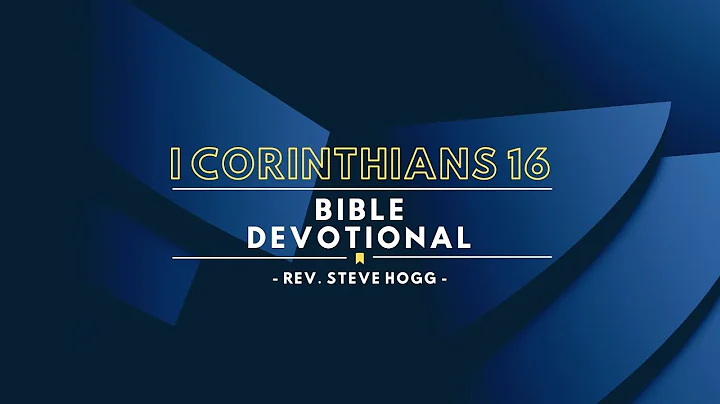Mastering Geometric Dimensioning and Tolerancing (GD&T)
Table of Contents:
- Introduction
- The Importance of Tolerancing in Mechanical Design
- The Limitations of Dimensional Tolerancing
- The Basics of Geometric Dimensioning and Tolerancing (GD&T)
4.1 The Concept of Feature Control Frames
4.2 Geometric Characteristics and Their Categories
- Understanding Surface Features and Features of Size
5.1 Differentiating Between Surface Features and Features of Size
5.2 The Application of Geometric Tolerances to Features
- Datums in GD&T: Defining Reference Surfaces
6.1 The Purpose and Identification of Datums
6.2 Using Datums to Establish a Datum Reference Frame
- Exploring Orientation Tolerances in GD&T
7.1 Parallelism: Controlling Parallelism to a Datum
7.2 Perpendicularity: Ensuring Perpendicularity to a Datum
7.3 Angularity: Controlling Angular Deviation from a Datum
- Location Tolerances: Position, Concentricity, and Symmetry
8.1 Position: Controlling Location in Terms of Tolerance Zones
8.2 Concentricity (Removed from the 2018 ASME Y14.5 Edition)
8.3 Symmetry (Removed from the 2018 ASME Y14.5 Edition)
- Understanding Profile Tolerances in GD&T
9.1 Profile of a Surface: Controlling Form, Orientation, and Location
9.2 Profile of a Line: Controlling Individual Line Elements
- The Significance of Runout Tolerances in GD&T
10.1 Circular Runout: Ensuring Roundness of Cross-Sections
10.2 Total Runout: Controlling Eccentricity Along the Axis
- The Envelope Principle and the Impact of Modifiers
11.1 Understanding the Envelope Principle in GD&T
11.2 Modifiers: MMC and LMC for Additional Tolerance
- The Role of Material Condition in GD&T
12.1 MMC and LMC Modifiers for Limits of Size
12.2 The Envelope Principle and the Independency Principle
- Summary and Conclusion
The Importance of Geometric Dimensioning and Tolerancing (GD&T) in Mechanical Design
Designing and building mechanical systems requires a comprehensive understanding of various parameters such as cost, materials, and manufacturing techniques. However, one of the key challenges in this process is ensuring that all the manufactured parts fit together and function as intended. This is where tolerancing plays a crucial role in the mechanical design process.
The Limitations of Dimensional Tolerancing
The traditional approach to tolerancing, known as dimensional tolerancing, defines how much each dimension of a part is allowed to deviate from its nominal value. While this approach is easy to implement, it often falls short in accurately reflecting how the part will be used and the specific functional requirements it needs to meet. For instance, dimensional tolerancing fails to specify the flatness of a surface needed to create a seal with another part or control the perpendicularity of a hole's axis to the surface it's drilled into.
The Basics of Geometric Dimensioning and Tolerancing (GD&T)
Geometric dimensioning and tolerancing (GD&T) is an approach that complements dimensional tolerancing, allowing for the control of 14 different geometric characteristics. GD&T provides a more comprehensive and functional way to communicate design requirements. These 14 geometric characteristics are divided into five categories: Form, Orientation, Location, Profile, and Runout.
Understanding Surface Features and Features of Size
In GD&T, it is essential to differentiate between surface features and features of size. Surface features refer to individual surfaces, while features of size have defined dimensions and include holes or features defined by two parallel surfaces. Geometric tolerances can have different interpretations when applied to surface features or features of size.
Datums in GD&T: Defining Reference Surfaces
To establish the necessary reference points for inspection and measurement in GD&T, datums are used. Datums are reference surfaces or lines that define the zero point for measurements. These datums can be applied to features using leader lines, extension lines, or directly attached to dimensions.
Exploring Orientation Tolerances in GD&T
Orientation tolerances in GD&T focus on controlling the angles between features. Parallelism ensures that a feature is parallel to a datum, while perpendicularity ensures it is perpendicular to a datum. Angularity is a more general orientation tolerance that defines the angle between a feature and a datum.
Location Tolerances: Position, Concentricity, and Symmetry
Location tolerances in GD&T aim to control the position, concentricity, and symmetry of features. Position tolerance specifies the maximum allowable distance a feature's axis or median plane can deviate from its theoretically exact position. Concentricity, although no longer included in the 2018 ASME Y14.5 edition, controlled the coaxial relationship of features. Similarly, symmetry, also removed from the 2018 ASME Y14.5 edition, focused on the symmetry of features.
Understanding Profile Tolerances in GD&T
Profile tolerances are highly versatile and allow for the control of form, orientation, and location of features. These are often used to ensure the overall shape of a feature meets specific requirements. Profile of a Surface controls the shape of the entire surface, while Profile of a Line focuses on controlling individual line elements.
The Significance of Runout Tolerances in GD&T
Runout tolerances in GD&T are crucial for controlling eccentricity and roundness. Circular Runout ensures the roundness of individual cross-sections, while Total Runout controls eccentricity along the axial direction, ensuring the feature remains within the specified tolerance zone.
The Envelope Principle and the Impact of Modifiers
The Envelope Principle, also referred to as GD&T Rule Number 1, ensures that the surface or surfaces of a regular feature do not extend beyond an envelope of perfect form. This principle is crucial in maintaining proper fit and functionality. Modifiers, such as MMC (Maximum Material Condition) and LMC (Least Material Condition), can be used to adjust the default behavior of tolerances, providing additional control over the functional requirements.
The Role of Material Condition in GD&T
Material Condition plays an important role in GD&T, affecting both the size and form of a feature. GD&T considers three conditions for any feature of size: maximum material condition, least material condition, and regardless of feature size condition. These conditions define the tolerance limits and how the feature's size impacts its tolerancing requirements.
In conclusion, incorporating Geometric Dimensioning and Tolerancing (GD&T) in mechanical design processes helps ensure that manufactured parts fit together and function as intended. By using GD&T, engineers can accurately communicate functional requirements, control various geometric characteristics, and maintain proper fit and functionality. Understanding the different tolerance types and employing them appropriately can significantly enhance the quality and performance of mechanical systems.
【Highlights】
- GD&T provides a more comprehensive approach to tolerancing, considering 14 different geometric characteristics.
- Geometric tolerances are applied to features rather than dimensions, allowing for more precise control.
- Datums play a crucial role in GD&T, providing reference points for inspection and measurement.
- GD&T encompasses various tolerance types, including orientation, location, profile, and runout tolerances.
- The Envelope Principle and modifiers like MMC and LMC further enhance the control and flexibility of tolerancing.
- Material condition influences both the size and form of a feature, impacting the tolerancing requirements.
【FAQs】
Q: What is the difference between dimensional tolerancing and GD&T?
A: Dimensional tolerancing focuses on individual dimensions of a part, while GD&T considers the functional requirements and controls various geometric characteristics.
Q: How are datums used in GD&T?
A: Datums are reference surfaces or lines used to establish a coordinate system for inspection and measurement in GD&T.
Q: Can GD&T be used for surface features and features of size?
A: Yes, GD&T can be applied to both surface features and features of size, although the interpretation and application may differ.
Q: What are the modifiers in GD&T?
A: Modifiers, such as MMC (Maximum Material Condition) and LMC (Least Material Condition), allow for additional control over tolerancing and tolerance zones.
Q: How does GD&T ensure proper fit and functionality of mechanical systems?
A: By accurately communicating functional requirements and controlling geometric characteristics, GD&T ensures that manufactured parts fit together and function as intended.







